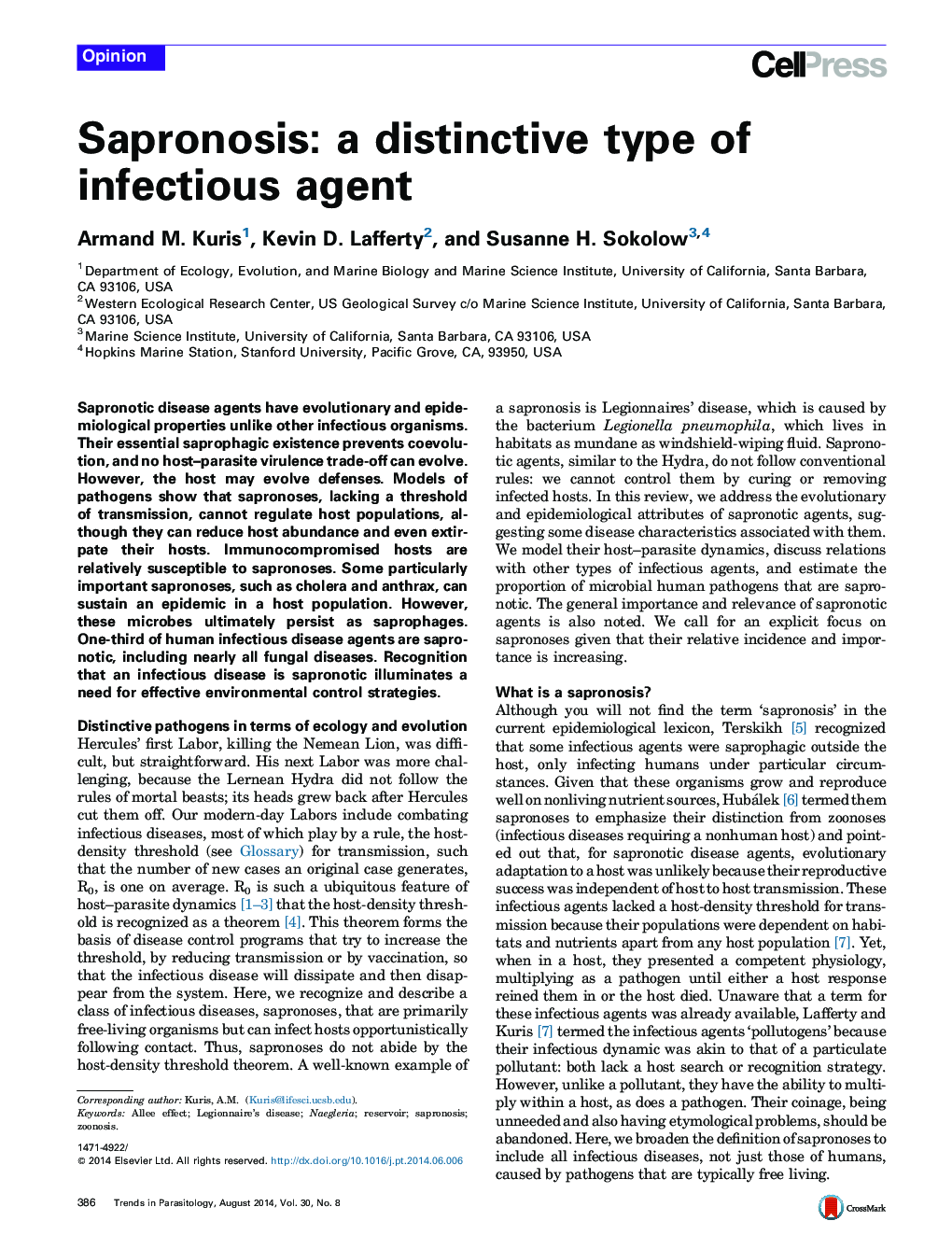| Article ID | Journal | Published Year | Pages | File Type |
|---|---|---|---|---|
| 3423015 | Trends in Parasitology | 2014 | 8 Pages |
•Sapronoses are a distinctive and prevalent kind of pathogen.•There is no virulence trade-off for sapronotic disease agents.•Sapronoses do not have a minimum host density threshold for transmission.•Most fungal, many bacterial, and some protozoan human diseases are sapronoses.
Sapronotic disease agents have evolutionary and epidemiological properties unlike other infectious organisms. Their essential saprophagic existence prevents coevolution, and no host–parasite virulence trade-off can evolve. However, the host may evolve defenses. Models of pathogens show that sapronoses, lacking a threshold of transmission, cannot regulate host populations, although they can reduce host abundance and even extirpate their hosts. Immunocompromised hosts are relatively susceptible to sapronoses. Some particularly important sapronoses, such as cholera and anthrax, can sustain an epidemic in a host population. However, these microbes ultimately persist as saprophages. One-third of human infectious disease agents are sapronotic, including nearly all fungal diseases. Recognition that an infectious disease is sapronotic illuminates a need for effective environmental control strategies.
